
Capybara
Capybara
Capybara
Capybaras are rodent animals that are famous for their laid-back expressions and their love of hot springs. Capybaras have very large bodies, but did you know that they are actually a member of the mouse family, just like guinea pigs and hamsters? If you know the very interesting features of capybaras here and there on their bodies, you may enjoy looking at them more. What are the characteristics and secrets of the capybara, which is said to be one of the largest rodents in the world? Let's take a sneak peek!
Capybara Basic Infomation
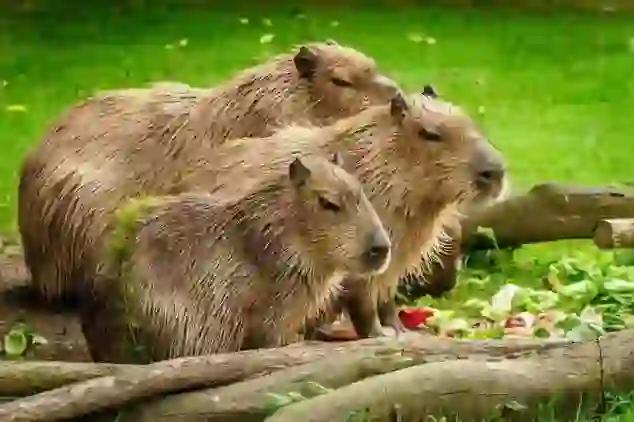
Mammalia-Rodentia-Caviidae.
Length:105~135cm. Weight:35~65Kg.
The main habitat of capybaras is in the eastern part of South America (South America), such as Brazil, Argentina, and Panama.They love the waterfront and live in grasslands and forests along the waterfront, such as rivers, lakes, and swamps.
Capybaras, the world's largest group of rats, usually live in herds of 10 to 20.It is said that the members of the herd are often made up of many females and their children, with one male as the main strong leader. There is no fixed breeding season for capybaras, and they can breed throughout the year, but they often give birth to their children in the warm spring. The gestation period is about 150 days, and each birth produces 1 to 8 children.
In the wild, capybaras live mainly on grasses that grow near water and aquatic plants. They also seem to be eating other plant sprouts and soft bark.They have big, strong front teeth, so they chew through and eat even hard plants.
Capybara Q&A

What is the origin of the name capybara?
What is the origin of the name capybara, which is a little hard to remember just by hearing it once?In fact, the word "capybara" is said to have the meaning of "thin grass eater" or "king of the meadow" in the words of the indigenous people of South America.
Many people remember "capipara" by mistake, so if you see someone like that, secretly tell them the correct name.
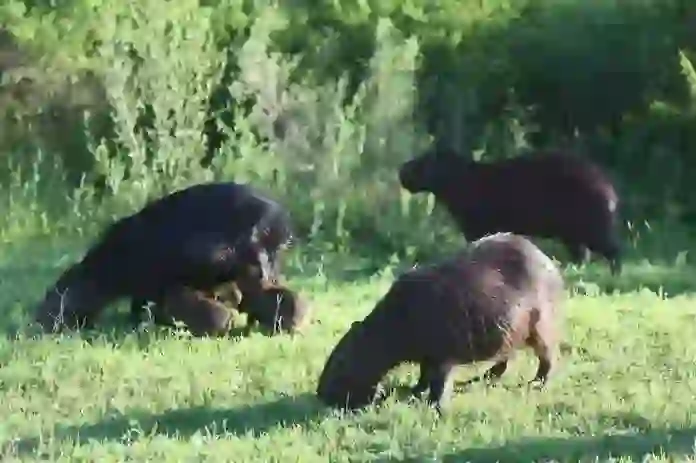
Why are capybaras in the water so often?
The natural enemies of capybaras in the wild are large snakes such as pumas, jaguars, and anacondas, and carnivores such as crocodiles.
When the capybaras are attacked by these natural enemies, they flee into the water to protect themselves. Capybaras are good swimmers, so they are safer underwater than on land.
In fact, the body of a capybara has many secrets to protect itself in the water and to swim quickly.
First of all, let's take a look at the water paddle between the toes of the capybara. This paddle allows the capybara to swim better and faster.
Next, let's focus on the capybara face.Can you tell that the capybara face has "eyes", "ears", and "nose" attached in a straight line to the top of the face?
Thanks to this face, capybara can hide in the water and breathe, while looking around and hearing the sounds.By the way, hippos also have eyes and ears in the same position as capybaras.
The environment of living near water is also similar.The habitat of hippos is in Africa, but it's interesting to see that capybaras and hippos, who live in completely different places, look alike.
Capybaras are also good at diving as well as swimming, and are said to be able to continue diving without breathing for about five minutes.
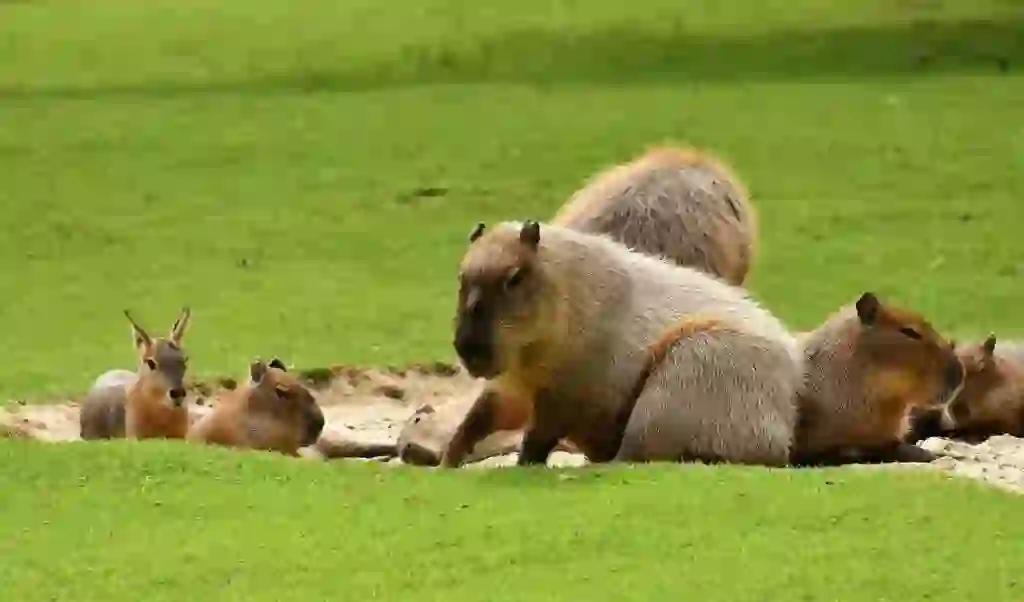
Why are capybara hair so stiff?
It may seem surprising, but the hair on the capybara is quite stiff and stiff to the touch.The reason why capybaras have stiff hair is because capybaras often go into the water.
Capybara hair is hard and contains very little water, so if you shake your body when you get out of the water, it will dry up in no time.
If you don't, the wet body hair will stick to your body for a long time and take away your body heat.As a result, the body hair of capybaras, which are often in the water, is so stiff that it dries out in no time.
By the way, the skin of a capybara is hard like rubber, and the needle doesn't stick easily.
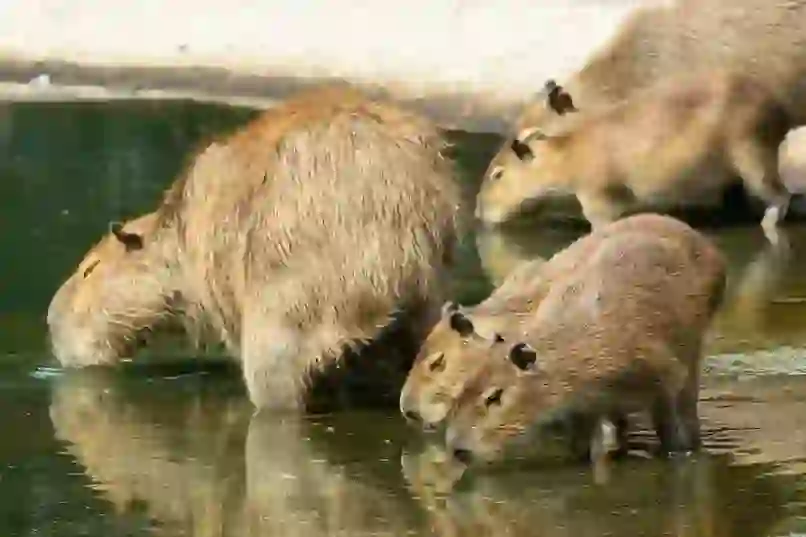
Why do capybaras like hot springs?
Have you ever seen a video of a capybara in a hot spring in Japan?
In fact, this scene has become a hot topic in the news every year from winter to spring in Japan.
For this reason, many Japanese people have the image of capybara as being in a hot spring or liking a hot spring.
So why do capybaras like hot springs?
Capybaras are animals from South America, which is warmer than Japan, so they are very uncomfortable with the cold.
Winters in Japan are too cold for such capybaras, so they cannot bathe in the water during the winter.
However, the hot springs are warm, making it a very comfortable place for capybaras who don't like the cold and like water.
Incidentally, the first place in Japan to prepare a hot spring for capybara was the "Izu Shaboten Zoological Park" in Shizuoka Prefecture.
The "original capybara open-air bath" was inspired by the fact that when the keeper was using hot water to clean the floor, capybaras were putting their limbs and buttocks on the hot water that had accumulated on the floor.
Also, in the zoo in winter, for capybaras that are sensitive to the cold, straw is laid in the rooms and heaters are added to protect them from the cold.

Is it true that capybaras run surprisingly fast?
It's true.
Capybara has a strong image of being relaxing, eating grass and sitting in the sun, but it is said to have a maximum speed of about 50 kilometers per hour.
The maximum human speed is about 45 kilometers per hour (recorded by Usain Bolt, a former track and field athlete from Jamaica), so capybaras can actually run faster than any other person.
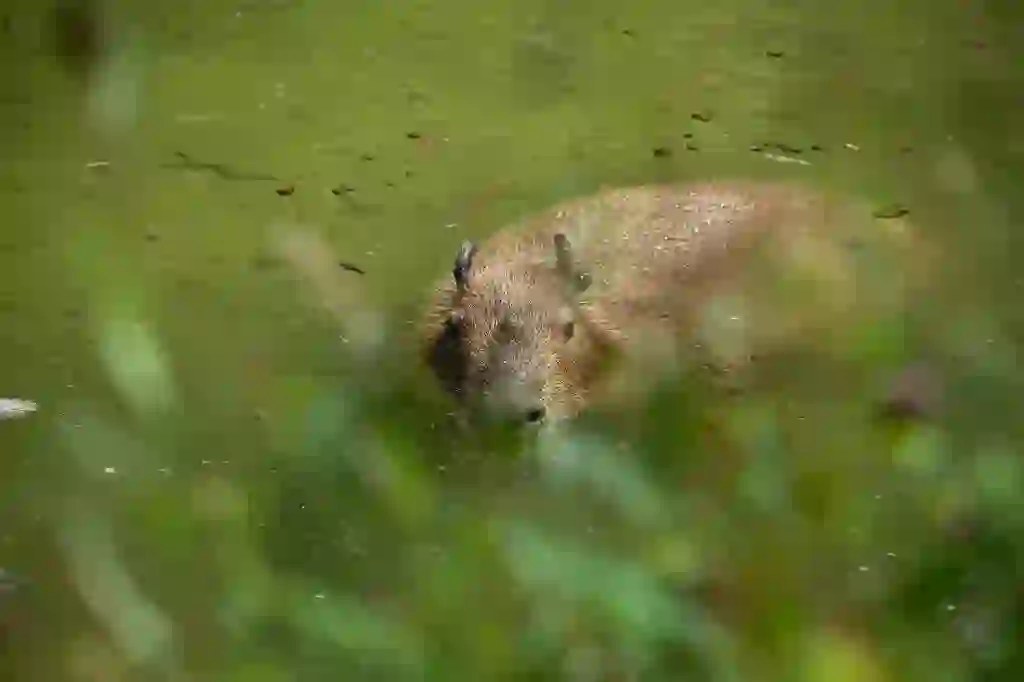
What do the capybaras at the zoo eat?
At the zoo, they eat grasses (such as timothy and orchard grass) as their staple food, and vegetables and fruits such as carrots, sweet potatoes, cabbage, and apples.
They also eat hay cubes (cubes of alfalfa grass) and pellets for herbivores. Other than that, some zoos give them as treats because they love bamboo leaves and raw pasture grass. And in some cases, calcium powder is applied to prevent calcium deficiency.
Some zoos hold events where you can feed capybaras, so if you want to try feeding capybaras, please give it a try.
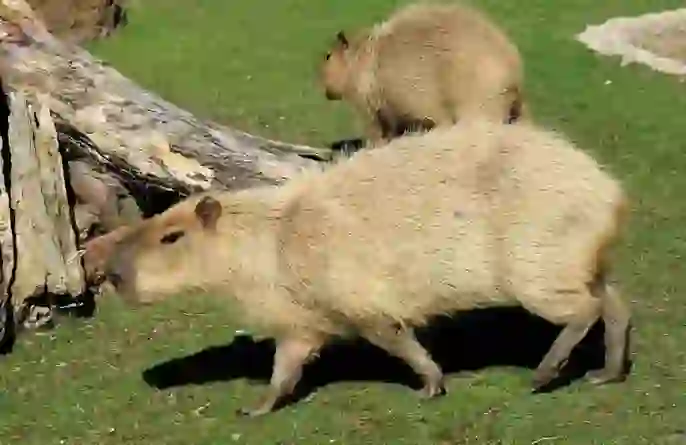
How do I tell a capybara male from a capybara female?
If you want to tell the sex of a capybara, pay attention to the top of its nose. Male capybaras have black bump-like projections called "morillo" on their noses.Females do not have morrillo, so if you look at the top of their noses, you can tell the difference between males and females.
Morillo develops as the male grows, producing a sticky, peculiarly smelling secretion.Male capybaras use morillo to stalk their own scents. It is said that morillo role is to assert his territory and to appeal his existence to females.
By the way,the younger and stronger the male, the more developed the morillo becomes, while the weaker and older the male, the less noticeable the morillo becomes.
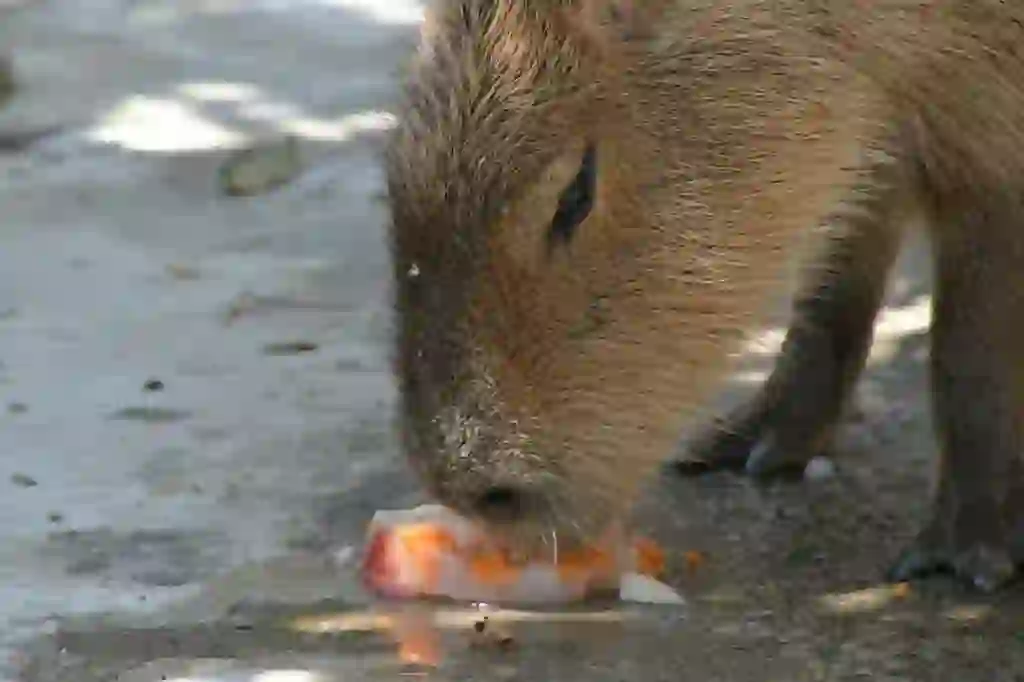
Can capybaras be kept as pets?
Capybaras are very cute, and some people may want to keep them as pets because they are calm and soothing just to look at them.Some pet stores actually sell capybaras for pets.
It is true that capybaras are very mild-mannered and friendly animals. However, since he is very large, he eats a lot of food (2-3 kg a day), which means he poops and pees a lot.
They also have a habit of pooping in the water, and they need to cool down in the pool in the summer, so you have to prepare a large pool where capybaras live.
And since the pool has to be cleaned every day, it takes a lot of time and money to take care of the capybara.
Capybaras also have a long lifespan of 5 to 10 years, and when they are startled, they chirp louder than you can imagine.
And since there are few veterinarians who can treat capybara diseases and injuries that are not common pets, it is not recommended to keep capybaras as pets.

Would you like to become a part of the 'Animalbook.jp'?
Turn your knowledge into Q&A and share it with the world. ※Publication will be activated after purchase. Let's share information together!
Capybara Type of List
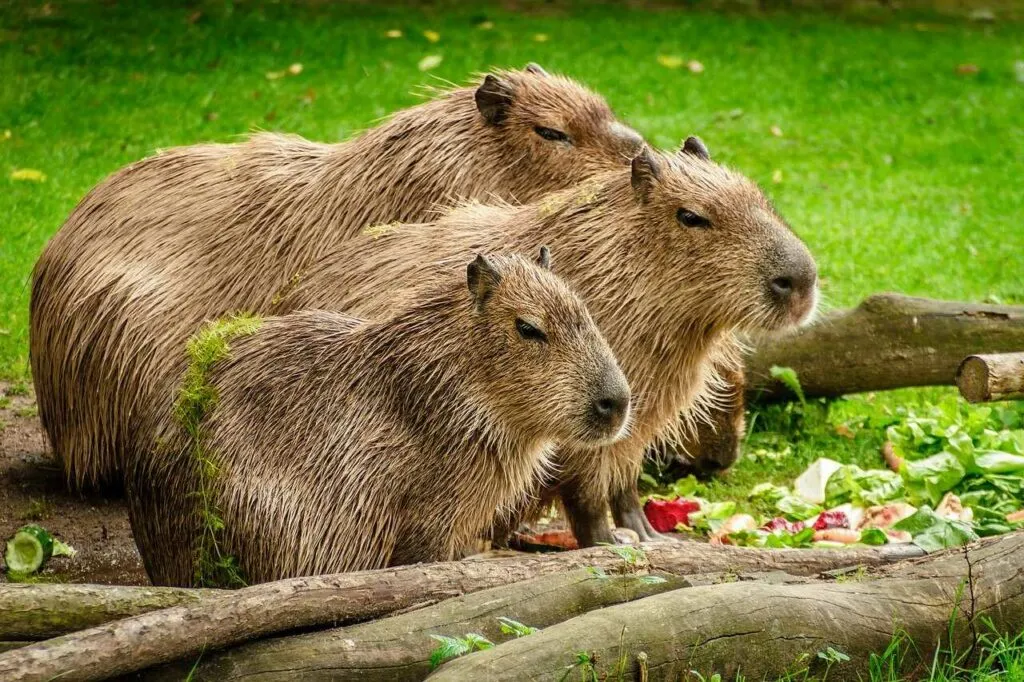
- Capybara
Information
Congratulations! You are the first commenter!

Create Your Favorite List!
Capybara
Save the animals you love! Build your own list to quickly revisit your favorites later.

Would you like to leave a comment?
※Please note: This is for the purchase of rights to post comments within the article.
Find Your Favorites!
Our shop offers a unique and attractive selection of goods themed around various animals.
Capybara References

- 東武動物公園「カピバラ」 http://www.tobuzoo.com/zoo/list/details/28/
- 京都市動物園「カピバラの死亡について」 https://www5.city.kyoto.jp/zoo/news/20150422-14761.html
- 毎日新聞「図解で納得 癒やしのカピバラさん」 https://mainichi.jp/articles/20161120/mul/00m/100/00800sc
- 伊豆シャボテン動物公園「What is カピバラ?」 https://izushaboten.com/kapibara/what.html
- 伊豆シャボテン動物公園「元祖!カピバラの露天風呂ヒストリー」 https://izushaboten.com/kapibara/history.html
- 日本テレビ「カピバラの科学」 https://www.ntv.co.jp/megaten/archive/library/date/14/04/0420.html
- BUSINESS INSIDER JAPAN「時速45キロ!陸上・ボルトのスピードをさまざまな動物と比べてみた」 https://www.businessinsider.jp/post-100731
Capybara Introduction of media used

出典:https://pixabay.com/images/id-1599766/

出典:https://pixabay.com/images/id-2415996/

出典:https://pixabay.com/images/id-3557854/

出典:https://pixabay.com/images/id-4357401/

出典:https://pixabay.com/images/id-203337/

出典:https://pixabay.com/images/id-3605853/

出典:https://pixabay.com/images/id-1352833/

出典:https://pixabay.com/images/id-5509770/

出典:https://pixabay.com/images/id-4545691/

Help Enrich Our Animalbook.jp with Your Media!
We are constantly looking to expand and enrich our Animalbook.jp with amazing photos and videos of animals. If you have any media that you'd like to share, please contribute and help us showcase the beauty and diversity of the animal kingdom. Your submissions will be credited and featured in our encyclopedia, reaching a wide audience of animal lovers.


















